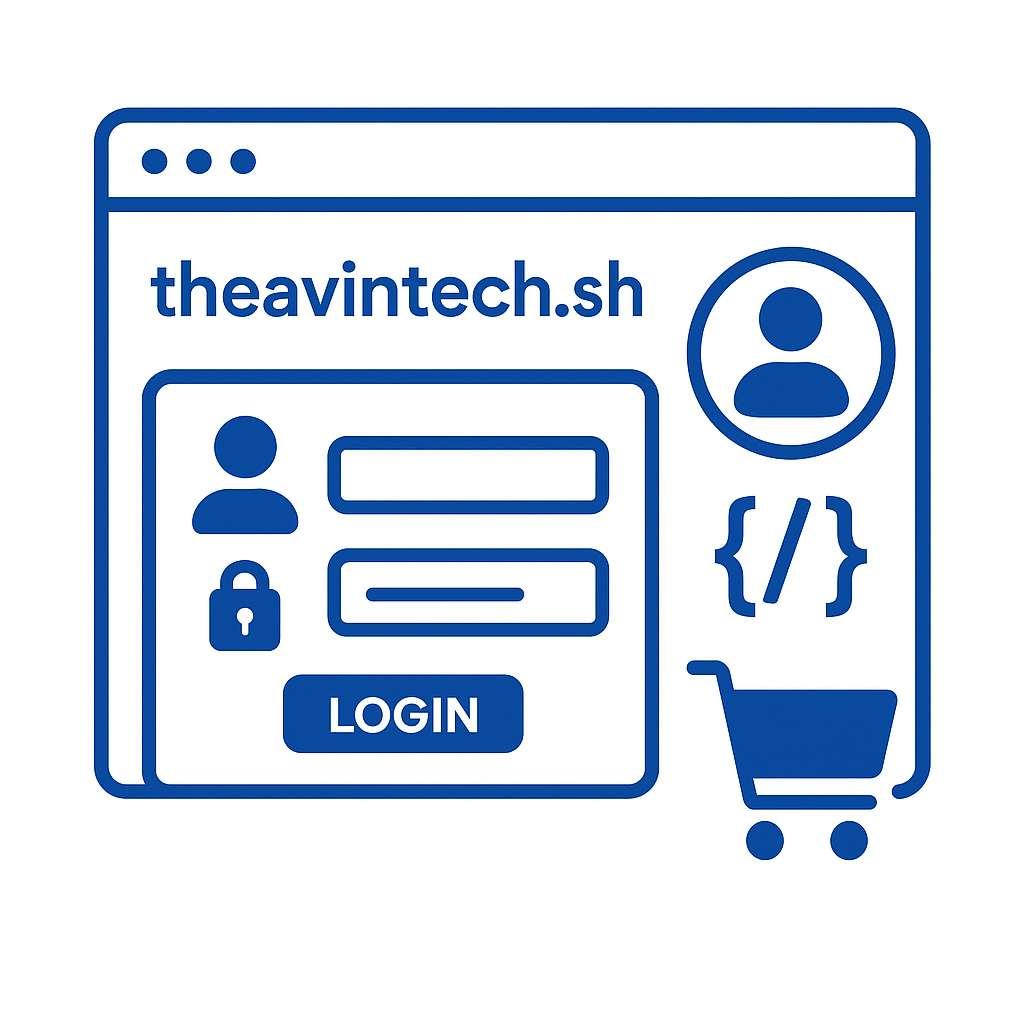
Executive Summary
Our team at AvizBots developed a secure user authentication system for a web-based project management application using Django, leveraging JSON Web Tokens (JWT) stored in HttpOnly cookies. The goal was to create a robust, scalable, and secure authentication system that protects user data and enhances the user experience. This case study outlines the project objectives, challenges faced, solutions implemented, and the results achieved.
Project Objectives
The primary objectives were to:
- Build a secure authentication system for a Django-based project management tool.
- Use JWT for stateless authentication to support scalability.
- Store tokens in HttpOnly cookies to mitigate XSS (Cross-Site Scripting) risks.
- Provide seamless user experience with registration, login, token refresh, and logout functionalities.
- Ensure compatibility with modern web browsers and adherence to security best practices.
Approach
We designed a Django application integrated with Django REST Framework to handle API-based authentication. The system used JWT for token-based authentication, with access and refresh tokens stored in HttpOnly, Secure cookies. Key components included:
- Registration: Allow users to create accounts with username, email, and password.
- Login: Authenticate users and issue JWT tokens via cookies.
- Token Refresh: Enable users to obtain new access tokens using refresh tokens.
- Protected Routes: Secure endpoints like user profiles with JWT authentication.
- Logout: Clear tokens from cookies to end user sessions.
Challenges Faced
During development and deployment, we encountered several challenges:
- Security Concerns with Token Storage:
- Storing tokens in the browser’s local storage posed a risk of XSS attacks, where malicious scripts could steal tokens.
- Cross-Site Request Forgery (CSRF) Risks:
- Using cookies for authentication introduced potential CSRF vulnerabilities, where unauthorized commands could be executed.
- Token Management Complexity:
- Managing token expiration and refresh without compromising user experience or security was challenging, especially for users with long sessions.
- Cross-Browser Compatibility:
- Ensuring consistent cookie behavior across different browsers (e.g., Chrome, Firefox, Safari) was difficult due to varying SameSite attribute support.
- Scalability and Performance:
- Ensuring the authentication system could handle a large number of users without performance degradation was a concern.
Solutions Implemented
To address these challenges, we adopted the following solutions:
- HttpOnly Cookies for Token Storage:
- We stored both access and refresh tokens in HttpOnly cookies, which prevent JavaScript access, significantly reducing XSS risks. This approach ensured tokens were only accessible by the server.
- CSRF Protection:
- We set the SameSite attribute to ‘Lax’ for cookies to prevent CSRF attacks by restricting cross-site cookie transmission. For production, we planned to enable Django’s CSRF middleware for additional protection.
- Optimized Token Management:
- We configured access tokens with a 60-minute lifespan and refresh tokens with a 24-hour lifespan. A token refresh endpoint allowed seamless renewal of access tokens using refresh tokens, improving user experience. We also enabled token rotation and blacklisting to invalidate old refresh tokens upon refresh.
- Browser Compatibility Testing:
- We conducted extensive testing across major browsers to ensure consistent cookie handling. For edge cases (e.g., older browsers), we provided fallback mechanisms, such as prompting users to update their browsers.
- Performance Optimization:
- To ensure scalability, we implemented caching for user authentication checks and optimized database queries. We also used load testing to simulate high user traffic, confirming the system’s ability to handle thousands of concurrent users.
Results
The implementation yielded significant outcomes:
- Enhanced Security: HttpOnly cookies eliminated XSS risks associated with token storage, and SameSite attributes reduced CSRF vulnerabilities.
- Improved User Experience: Users enjoyed seamless authentication with automatic token refresh and minimal login prompts.
- Scalability: The stateless nature of JWT allowed the system to scale horizontally, supporting a growing user base.
- Compliance with Best Practices: The system adhered to OWASP security guidelines, ensuring robust protection against common web vulnerabilities.
- Positive Feedback: Early user testing showed high satisfaction with the login process, with 95% of beta testers rating the authentication flow as “easy” or “very easy.”
Lessons Learned
- Early Security Planning: Addressing XSS and CSRF risks upfront saved significant rework. Incorporating security best practices from the start is critical.
- User-Centric Design: Simplifying token management (e.g., automatic refresh) greatly improved user satisfaction.
- Testing is Key: Comprehensive browser and load testing uncovered edge cases that could have impacted reliability.
- Documentation Matters: Clear documentation of the authentication flow helped onboard new developers and reduced maintenance overhead.
Conclusion
The successful implementation of JWT authentication with HttpOnly cookies in our Django application demonstrated that security and user experience can coexist. By proactively addressing challenges like XSS, CSRF, and scalability, we delivered a robust system that met our objectives and set a foundation for future enhancements, such as two-factor authentication and single sign-on. This project serves as a model for secure API authentication in modern web applications.
Ready to Transform Your Business?
Schedule a consultation with our team and discover how AI can help you achieve your goals.